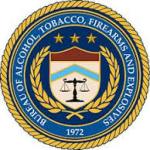As someone who has sold more than 12,000 guns retail, which included selling guns at gun shows and over the internet, I think I know a little bit more about whether today’s White House announcements will have an impact on gun violence than does Mike Huckabee, who has already announced that he will “repeal” every one of Obama’s gun initiatives, even though most of what the President intends to do has nothing that could be repealed at all.
 Coincident with the White House news release and media blitz, the ATF has issued a new publication which attempts to define their notion of what constitutes being in the “business” of selling firearms, which is one of the key elements in the new Obama plan; i.e., people who sell guns privately at gun shows or online may now be required to operate as federally-licensed dealers, which means that they must conduct NICS-background checks on every gun they sell – unless, of course, the gun is transferred to another dealer.
Coincident with the White House news release and media blitz, the ATF has issued a new publication which attempts to define their notion of what constitutes being in the “business” of selling firearms, which is one of the key elements in the new Obama plan; i.e., people who sell guns privately at gun shows or online may now be required to operate as federally-licensed dealers, which means that they must conduct NICS-background checks on every gun they sell – unless, of course, the gun is transferred to another dealer.
I have read this publication with care, in particular a series of brief vignettes that give examples of people transferring guns as a business transaction as opposed to people transferring guns where no real business activity occurred. In my judgement, this publication is totally consistent with relevant laws as well as a reflection of the approach usually taken by the ATF in regulating firearm sales: “As a general rule, you will need a license if you repetitively buy and sell firearms with the principal motive of making a profit. In contrast, if you only make occasional sales of firearms from your personal collection, you do not need to be licensed.” And this rule applies to every venue that might be possibly used for selling guns – your store, retail space, trunk of your car, laptop computer or anywhere else.
I never had a problem complying with this rule when I sold guns at shows or over the internet because I was always a federally-licensed dealer; hence, every gun in my inventory needed to be identified as to where it came from and to whom it was then sold. And since as a licensed dealer I could only sell to individuals after completing a background check, it didn’t matter what sales venue I used. The ATF could (and did) inspect my documentation to insure that every gun in my inventory was properly acquired in and transferred out, and if I couldn’t produce the requisite paperwork for any particular transaction they would raise holy hell.
To provide some guidance as to what constitutes dealing in firearms, the ATF has appended 9 examples of different types of gun transfers of which 5 instances would require a dealer’s license and 4 others would not. This is a pretty comprehensive series of examples which, to my mind, honestly reflect the basic requirements of operating with a federal dealer’s license as opposed to an individual who has a personal need or desire to transfer some guns. On the other hand, anyone behaving like the 5 ‘repetitively buying and selling’ examples who doesn’t currently have a dealer’s license should be prosecuted not just for illegal sale of guns, but for being a complete and unmitigated dope. And any current FFL-holder who sells guns to someone knowing or suspecting that this individual is engaging in repetitive, for-profit sales, is aiding and abetting straw sales - period, that’s that.
The truth is that most gun dealers buy from and sell to the same people all the time. Even my internet sales, which were always dealer-to-dealer transactions, went to the same dealers because I trusted them and they trusted me. Although the term ‘straw sales’ never appears in this publication, when someone buys a gun from a dealer intending to resell it privately to someone else, that’s exactly what constitutes a straw sale, and anyone who actually believes that this infringes on 2nd-Amendment rights, also probably believes that Mexico will pay for Donald Trump’s new fence.



Recent Comments